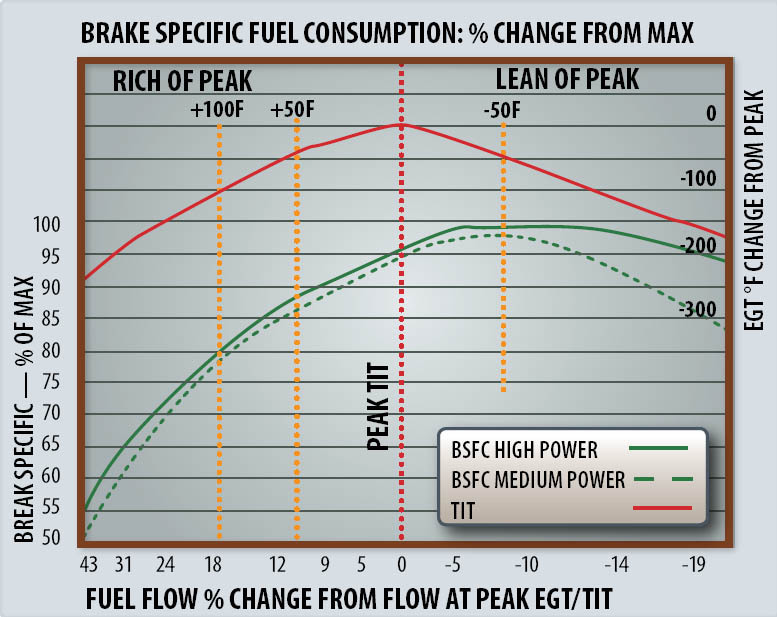The data is out there…
“To improve the flight efficiency of the GA fleet, Savier says magnetos need to be replaced, once and for all, with electronic ignitions, and engines need the kinds of precise fuel injection that allows his Continental to run an almost incomprehensible 300 degrees lean of peak. In fact, Savier says his engine runs so lean, and so cool, that he has trouble keeping cylinder heads and oil temperatures warm enough at altitude—even though his engine has no oil cooler.
On a typical long-distance flight, Savier flies at an altitude of 17,500 feet, about 35-percent power, full throttle, 190 KTAS, burning 3.5 gallons of fuel per hour.
"
http://www.aopa.org/News-and-Video/All-News/2008/December/30/One-hundred-miles-per-gallon
The certified kit is about 5 grand give or take.
http://www.electroair.net/stc_ignition_kit2.html
If it delivers, at European Avgas prices it is rather interesting.
“ to run an almost incomprehensible 300 degrees lean of peak.
This part does not pass my sanity check: It’s a well know fact that BEST BSFC is attained @ 50° LOP and any leaner is LESS efficeint, not the opposite.
In other words more [leaner] is NOT better !

Hah ! Just noticed that Article is from 2009 – you would think that such an INNOVATION would have found it’s way into the market in the last 5 years … that is, if it truely is an innovation 
If it were such bad business they wouldn’t be applying for extra STC’s would they… and we all know very well here how established aviators regard INNOVATION.
not sure I follow you Shorrick …
the point is that the claims that were made are grossly over-stated.
On a typical long-distance flight, Savier flies at an altitude of 17,500 feet, about 35-percent power, full throttle, 190 KTAS, burning 3.5 gallons of fuel per hour.
35% of max rated power is rather a corner of the envelope… most likely it represents the absolute operating ceiling of some non-turbo aircraft, and we all know the operating ceiling needs “best power” (by the obvious definition of “ceiling”) and there is only one way to get best power and that is about 130F ROP.
It is possible that by moving the ignition timing around, you can get the same HP at peak EGT / stochiometric, so that would be nice.
But it does NOT represent a typical operating condition in GA. In the TB20, for example, I run with peak EGT SFC-FL170 and only 170-200 needs best power (130F ROP, max RPM).
If the above is a wrong then I wonder what aircraft is doing 17.5k at 35% of max rated power? A 737? An F16 on the back of the curve?
Electronic ignition can do a great deal for our engines (I used to make them for Yamaha motorbikes in the 1970s) but it isn’t going to deliver dramatic (or any) MPG improvements in peak EGT cruise (assuming a non shagged magneto, etc) unless somebody has found a way to make fuel and air molecules to stick together in some new configuration (Nobel Prize work, for sure) 
“If the above is a wrong then I wonder what aircraft is doing 17.5k at 35% of max rated power? A 737? An F16 on the back of the curve?”
A modified Vari-EZ on an O-200 allegedly.
The big downside of electronic ignition would be smooth operation at idle. I love how the engine sputters at idle, shaking with its unique rhythm 
The Guimbal G2 helicopter has one traditional magneto and one electronic ignition for its Lycoming O360.
As per my earlier post (#6) I think there is scope to increase high altitude mpg with more ignition advance, assuming a normally aspirated engine running at relatively low manifold pressure. I don’t believe that requires breaking any physical laws 
Plenty of people are running Lightspeed ignition successfully but the efficiency benefit is primarily a high altitude thing, useful where full throttle provides low manifold pressure.
This part does not pass my sanity check: It’s a well known fact that BEST BSFC is attained @ 50° LOP and any leaner is LESS efficient, not the opposite. In other words more [leaner] is NOT better !
That’s true with fixed ignition advance, but with low manifold pressure and hence without a detonation issue, you can advance the spark to allow more time to burn a leaner mixture. You could visualize it as the flame front trying to make its way across a air volume with fewer and fewer pockets of fuel: if you have more time for the flame front to travel across the full volume, you stand a better chance of burning the whole volume. Then as a result of having plenty of air and fewer rich spots, you burn the fuel more completely and the additional air lowers the EGT relative to best SFC mixture with less spark advance.